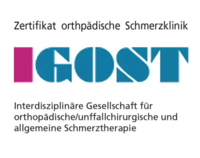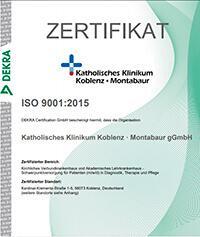Hip Osteoarthritis (coxarthrosis) — Hip Replacement: treatment in the Best Hospitals of Germany
Treatment prices are regulated by national law of the corresponding countries, but can also include additional hospital coefficients. In order to receive the individual cost calculation, please send us the request and medical records.
Treatment of Hip Osteoarthritis (Coxarthrosis) in Germany
- Diagnostics
- Arthroscopic surgery
- Diagnosis and conservative treatment
- Hip replacement and rehabilitation
- Endoprosthesis replacement in coxarthrosis
- Endoprosthesis replacement in coxarthrosis with rehabilitation
- Treatment with autologous conditioned plasma (ACP)
- Bilateral hip replacement
- Bilateral hip replacement and rehabilitation
- Autologous chondrocyte implantation (ACI)
- Orthopedic rehabilitation

Department of Adult and Pediatric Orthopedics, Traumatology
The Department of Adult and Pediatric Orthopedics, Traumatology is part of the specialized Center for Musculoskeletal Disorders, whose medical team consists of highly qualified orthopedists, traumatologists, and spinal surgeons. The department offers modern diagnostics and treatment of the entire range of musculoskeletal diseases. The department's field of competence includes the treatment of injuries of varying severity. The therapeutic options cover both conservative measures and surgical interventions, which are mainly performed using sparing minimally invasive techniques. The treatment concept is based on the comprehensive approach – from the use of conservative methods to physiotherapeutic procedures the day after surgery.






Department of Adult and Pediatric Orthopedics, Traumatology, Foot Surgery
According to the prestigious Focus magazine, the Department of Adult and Pediatric Orthopedics, Traumatology, Foot Surgery ranks among the top German medical facilities specializing in hip surgery! The department offers the full range of high-precision diagnostics and conservative and surgical treatment for diseases of bones, joints, muscles, ligaments, and tendons. One of the department's key areas of clinical practice is large joint arthroplasty. In this area, the department is awarded the prestigious endoCert certificate. The doctors in the department's operating rooms successfully perform knee, hip, and shoulder replacement surgery. Whenever possible, preference is given to minimally invasive joint replacement surgery. An important part of the work of the department's doctors is the treatment of orthopedic diseases and musculoskeletal injuries in children. The specialists at the medical facility also have long experience in helping patients with foot pathologies and deformities, including hallux valgus, hallux rigidus, hammer toes and claw toes, metatarsalgia, etc. The department's doctors have in their arsenal state-of-the-art equipment and modern treatment methods that allow for the achievement of excellent therapeutic results. More than 3,500 inpatients and about 17,000 outpatients are treated at the medical facility every year.




Department of Orthopedics, Traumatology, Spinal Surgery and Foot Surgery
According to the Focus magazine, the Department of Orthopedics, Traumatology, Spinal Surgery and Foot Surgery ranks among the top German medical facilities in treating orthopedic diseases and spinal surgery! The department carries out comprehensive examinations and effectively treats musculoskeletal diseases and injuries. The department has about 130 beds for its patient hospitalization. Doctors annually admit more than 4,000 patients for inpatient treatment. Several thousand surgical interventions of varying complexity are performed on the basis of the medical facility annually. The department offers the services of the certified Maximum Care Joint Replacement Surgery Center (EPZmax) and the certified Trauma Center. In addition, the department's specialists have vast experience in treating spinal and foot pathologies. The main goal of the department's doctors is to restore mobility and eliminate pain. The specialists always prefer an individual approach to each patient and his clinical case.






Coxarthrosis is a severely disabling disease. In 80% of patients, it sooner or later reaches the advanced stages requiring hip replacement surgery. These surgical interventions are effective in 90% of cases, while in the best German hospitals, efficiency rates reach 97-98%. The essence of the operation is that the patient's own hip joint is removed, and an artificial prosthesis is implanted instead.
Content
- Who may a need hip replacement for coxarthrosis?
- What does an artificial hip joint consist of?
- Preparing for surgery
- How is the surgery performed?
- Is the surgery painful?
- Postoperative period
- Treatment of hip bursitis
- Revision replacement surgery
- Why is it better to undergo treatment in Germany?
- Treatment in Germany with Booking Health
Who may a need hip replacement for coxarthrosis?
Coxarthrosis is a degenerative disease of the hip joint. The disease develops gradually. It progresses over the years and even decades, but in the end, it inevitably leads to total joint destruction. Even the most modern treatment methods do not allow doctors to either restore the hip joint or at least stop the progression of coxarthrosis.
A person can live with this pathology for some time. He suffers from pain but takes painkillers. At first, arthrosis worsens only periodically, and pain appears under load. Then it begins to torment the person at rest, and painkillers become less and less effective. In addition, their constant intake is harmful to health and often causes gastrointestinal bleeding.
There is a need for radical surgical treatment at a certain stage: total hip replacement. This operation is recognized as the most successful in the world in improving the quality of life. Those who undergo this surgery can fully restore their physical activity and get rid of the pain. Modern artificial joints serve a person for decades, and most people will never need a second operation to replace a prosthesis.
The cost of hip replacement surgery in hip coxarthrosis starts from €11,783. You can find prices for other treatment options on the Booking Health website.
The best hospitals for the treatment of hip osteoarthritis in Germany are:
- University Hospital Rechts der Isar Munich
- University Hospital of Ludwig Maximilian University of Munich
- University Hospital Ulm
- University Hospital Frankfurt-am-Main
- Vitos Orthopedic Clinic Kassel
What does an artificial hip joint consist of?
Coxarthrosis usually requires total hip replacement surgery. This means that not only the femoral component is replaced, but also the acetabular one.
An artificial hip joint for total replacement consists of the following parts:
- Cup imitates its own acetabulum, which is located on the pelvic bone.
- The leg becomes an extension of the patient's own femur.
- The neck and head fit into the cup, and their rotation provides movement.
- The liner is placed between the cup and the head.
The components of the prostheses are standard, but they are available in different sizes from manufacturers. In addition, their structure and manufacturing materials are different, and therefore doctors individually select the best combinations of components of the artificial hip joint for each patient.
During surgery, the components of the endoprosthesis are fixed using either cement or cementless techniques. The cementless method is most common. In this case, the parts of the prosthesis are fixed with screws, and then they ingrow into the bone. The cement method of fixation is usually preferred in patients with osteoporosis.
Preparing for surgery
It is advisable to prepare your body for the upcoming surgical procedure. Proper preparation will allow the person to recover easier and faster, improve the tolerance of the postoperative period, and reduce the risk of complications.
Key recommendations:
- Quitting smoking is required one month before surgery. Smoking impairs blood circulation, increases the risk of infectious complications, and slows down tissue regeneration.
- Workouts for torso and arm muscles because the main load falls on them in the first 1-2 months after the operation.
- Weight loss, since the risk of complications, increases significantly for those with BMI over 35, and for patients with BMI over 40, the surgery may even be canceled.
- Elimination of infectious foci – treatment of teeth, getting rid of chronic inflammation in the throat, genitals, etc.
Several days prior to surgery, you will need to undergo instrumental diagnostics and tests. The medical staff will teach you how to use walkers or crutches, and how to sit down and stand up correctly. You will learn to walk without a load on your leg, which will soon be operated on.
On the day before surgery, you should not eat after 6 pm and drink after midnight.
How is the surgery performed?
The surgical intervention for total hip replacement takes 1-2 hours in standard cases.
The doctor removes the patient's own hip joint. In its place, he implants the components of the prosthesis. The femur is transected. The stem of the endoprosthesis becomes its continuation. The doctors often use a short stem to preserve as much of the patient's own bone tissue as possible. The acetabulum is drilled out, and a cup is fixed into its place with screws.
Upon the completion of the surgery, the doctor sutures the wound. Drains are often placed in it to avoid the accumulation of fluid – blood, and lymph. The liquid flows through the tubes within 1-2 days, and then they are removed.
Is the surgery painful?
Hip replacement surgery is performed under general or spinal anesthesia.
With general anesthesia, deep depression of the central nervous system occurs. A person's consciousness is switched off, so he does not feel anything. Most major operations in all surgical fields are performed using this type of anesthesia.
Medical specialists in Germany often use spinal anesthesia. Nerve sensitivity is blocked at the level of the spinal cord. Deep depression of consciousness does not occur, but sedation is used so that the person does not experience stress. Sedation makes the patients very sleepy, and therefore they often sleep during the operation. Even if they do not fall asleep, they do not feel anything and will not retain the memories of the surgery. Spinal anesthesia is safer, and it provides the possibility of activating the patient already on the first day after surgery. This accelerates rehabilitation, shortens the duration of hospital stay, and reduces the risk of some complications.
Immediately after the operation, infiltration anesthesia is used. Doctors inject local anesthetics into the tissues around the hip joint. They "turn off" the sensitivity of the nerves. This is a temporary effect. The doctors use compression stockings (compression garments) to make it last longer. In addition, they reduce the risk of thromboembolic complications.
In the first days after surgery, the patient usually experiences pain. It is treated with systemic drugs. Depending on the severity of pain, both narcotic and non-narcotic analgesics can be used. The need for opiates usually persists for no more than 1–2 days after surgery.
Postoperative period
Modern Orthopedic Centers try to start rehabilitation as early as possible after hip replacement. If spinal anesthesia has been used, then the patient can walk on the first day after surgery. It is impossible to lean on the operated leg, so walkers or crutches are used. If general anesthesia was used, the patient's activation is indicated one day after the operation.
While lying in bed, rehabilitation activities begin: exercises, massage, physiotherapy. The leg is kept in the abduction position. There is a roller between the legs. The patient is advised to avoid certain movements, which can harm the operated leg. These include:
- Any sudden movements.
- Rotation in the hip joint.
- Flexion of the knee or hip joint to more than 90 degrees.
When the doctors allow the load on the operated leg depends on the age and health of the patient, as well as the method of fixation of the prosthesis: cement or cementless. If the cement was used, the load is allowed immediately after surgery, and a month later, it can be maximal. Moreover, the patient is allowed the full load immediately if he is over 90 years old or is weakened by comorbidities.
With cementless fixation, it takes time before the components of the endoprosthesis are securely attached to the bone. Therefore, in the first weeks, the operated leg is usually not loaded at all. It is allowed to put 15% of body weight into it in 7-10 days. After three weeks, the load can be increased to 50%, and the full load is allowed after two months.
Regardless of how much time has passed since the operation, in the case of severe pain in the hip joint, the load on the operated leg is limited. However, moderate pain is tolerated. It often occurs at the initial stages after surgery and should not become a reason for refusing therapeutic exercises. The pain will gradually relieve.
Some patients may develop complications after surgery. The most dangerous are infections and thromboembolism. To prevent them, doctors use medicines. The patient receives antibiotics and drugs to reduce blood clotting (anticoagulants) in the postoperative period.
Treatment of hip bursitis
Joint replacement surgery causes complications in 2-4% of patients. One of them is bursitis – an inflammation of the periarticular sac. You can undergo hip bursitis treatments in Germany. This disease causes pain that increases after exercise, and the walking pattern changes.
Whenever possible, hip bursitis treatments in Germany are conservative. Treating hip bursitis in Germany involves using painkillers, physiotherapy, limb unloading, blocks, and corticosteroid injections. If these procedures do not work, surgical hip bursitis treatments in Germany become an option to choose.
Surgical hip bursitis treatments in Germany involve the excision of hypertrophied areas of the trochanteric bursa. If necessary, tendon repeated fixation is performed. Open surgery is usually required. In addition, treatment options for hip bursitis in Germany may include arthroscopy. You can find out the hip bursitis surgery cost in Germany on the Booking Health website. If you book a program through our service, then the hip bursitis surgery cost in Germany will be lower for you.
Revision replacement surgery
Up to 15% of patients require a second hip replacement. There are two most common reasons, one of which dominates in the first year after the operation, and the second – after 5-10 years or more.
Early revision surgery is most often performed for infectious complications. The bacteria cause tissue inflammation in the prosthetic area. In the first year after hip replacement, the infection becomes the cause of revision interventions in 50-60% of cases.
In the long term, the leading cause is aseptic loosening of the endoprosthesis. These complications begin to increase five years after surgery and peak after ten years. At the same time, infectious causes during this period are becoming increasingly rare: they account for only 10% of all revision interventions.
Other reasons for revision surgery include:
- Dislocation of the prosthesis.
- Its mechanical damage as a result of injury.
- Bone fractures near the prosthesis.
- Resorption of bone tissue.
- The appearance of osteophytes (bone growths).
Infection is the most unfavorable cause of revision hip surgery. To eliminate its consequences, not even one but several operations may be required.
At the same time, aseptic loosening means wear and tear of the prosthesis. The interventions for this complication are single-stage. In 4 out of 10 cases, the entire prosthesis has to be replaced. In the other four patients – only the pelvic component is replaced, and in the remaining 2 cases – only the femoral part of the artificial hip joint is replaced.
Why is it better to undergo treatment in Germany?
Tens of thousands of hip replacement surgeries are performed in German hospitals every year. Doctors operate not only on fellow citizens, but also on foreign patients. Hip replacement in Germany has the following benefits:
- The use of high-quality endoprostheses from the best world manufacturers. They can serve for decades without requiring replacement.
- Not only primary, but also repeated operations are successfully performed.
- Safe replacement surgery: the risk of complications, including infections or thromboembolism, is minimal.
- Accelerated rehabilitation under the fast-track medical program – the duration of hospital stay is reduced to 3-7 days.
- Hip replacement in Germany completely eliminates pain and restores limb function in 97% of cases.
- Nearly 90% of patients will not need a second hip replacement surgery in the future.
- Relatively low cost of treatment: it is lower than in many other developed countries of Western Europe, Asia, and North America.
Even the most complex surgeries to avoid disability are successfully performed in Germany. The surgeons perform the hip replacement for a significant decrease in the length of the limb, cicatricial changes after previous operations, and significant post-traumatic deformity of the acetabulum. The patients are successfully operated on after previous unsuccessful surgical interventions, including in the case of the development of infectious complications.
Even if it is not possible to select standard components of the endoprosthesis for the patient, this is not a verdict. To replace the hip joint, individual designs are produced in Germany. After scanning the human body, the computer provides the ideal configuration of the acetabular component, indicates the best fixation points, and helps the surgeon plan the operation. It is printed on a 3D printer. Although such prostheses increase the cost of treatment, they are as convenient, comfortable, and physiological as possible. In addition, they restore limb function even in the most seemingly hopeless cases, when only disability can be an alternative to such treatment.
Treatment in Germany with Booking Health
To undergo hip replacement in Germany, please use the Booking Health services. On our website, you can see the cost of treatment in different German hospitals, compare prices and book a medical program at an affordable price.
Please contact the Booking Health specialists to undergo treatment in Germany. Here are our benefits for you:
- We will choose the best hospitals for hip replacement surgery.
- We will help you overcome the language barrier and establish communication with the German hospital and your attending physician.
- We will reduce the waiting time for the medical care program and book a doctor's appointment on the most suitable dates for you.
- We will reduce the price. The cost of treatment in Germany will be decreased due to the lack of additional coefficients for foreign patients.
- We will take care of all organizational issues: documents for entering the country, transfer from the airport, hotel, interpreter, etc.
- We will prepare the medical care program and translate medical records into German. You do not have to undergo previously performed diagnostic tests.
- We will provide communication with the hospital after completing treatment in Germany.
- We will organize additional medical examinations, treatment in Germany, or rehabilitation, if necessary.
- We will buy medicines in Germany and forward them to your native country.
- We will help you keep in touch with the hospital after your hip replacement in Germany.
Booking Health makes treatment in Germany easier, faster, and cheaper. We will fully organize your trip, and you will only have to focus on restoring your health.
Authors: Dr. Vadim Zhiliuk, Dr. Sergey Pashchenko

